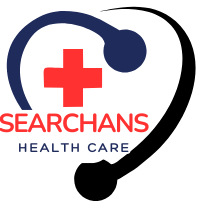Innovative treatments have provided chronic condition patients with expanded options to treat their conditions, including medications designed to ease pill burden, improve medication adherence, and offer targeted therapies.
Regenerative medicine holds promise as an alternative therapy to address debilitating diseases that account for $4.1 trillion annually in health care spending, such as delayed type 1 diabetes treatment or respiratory syncytial virus vaccination (RSV).
Aging and Chronic Diseases
Patients living with chronic illnesses face unique care challenges, which disproportionately impact older adults. Thankfully, advances in medicine are helping reduce this immense strain on both patients and our healthcare system.
While many of these conditions can be managed or even cured, most cannot. Furthermore, their symptoms often manifest differently and interact with one another, making treatment increasingly complex and challenging – for instance diabetes may also accompany mental illnesses like depression that exacerbate both its effects and symptoms.
Medical scientists are making great strides in understanding how these conditions interact and influence one another, leading them to create new treatments which not only target individual symptoms but also work together for increased outcomes and decreased costs.
This approach is revolutionizing how doctors consider and treat chronic diseases, creating new understandings about them and their progression. Pharmacogenomics, for instance, is an emerging field that assists physicians in providing their patients with timely medication by carefully studying each person’s genetic makeup and how it responds to certain drugs – potentially helping reduce the number of medications taken daily as well as side effects in future treatments.
Precision Medicine
Precision medicine has grown increasingly popular, yet its exact definition remains vague. Generally speaking, it refers to tailoring medical treatments specifically to each patient’s unique characteristics.
Your doctor can use precision medicine to help protect you if they detect that your gene variant increases your risk for certain cancers, with screening and lifestyle recommendations to reduce that risk. However, precision medicine goes further than just genetic analysis; its aim is to understand all interactions among genes, proteins, metabolism, gut microbes and health outcomes in order to accurately predict outcomes for health outcomes.
Precision medicine refers to the practice of using advanced molecular testing and imaging tools to detect disease risk and response, including multi-omics profiling such as genomics, transcriptomics, proteomics and metabolomics as well as big data, artificial intelligence and machine learning (Fig 1).
Precision medicine goes further than traditional medicine in that it seeks to prevent disease by acting early and intervening early. Precision medicine takes into account social, environmental, and behavioral factors which could impact disease risk and treatment response – this process is known as personomics; personomics seeks to assess individual life circumstances which influence disease susceptibility or phenotype, such as lifestyle or behavioral traits – this information then allows more accurate patient descriptions that help inform decision making processes.
Diagnostics
Accurate diagnosis of chronic diseases is essential to improving health outcomes and providing personalized and effective treatments. In the US alone, about 86% of health care spending goes toward chronic disease treatment, making diagnosis an integral component of care management. Diagnostic innovations allow doctors to quickly and precisely identify diseases more quickly.
An integral component of diagnosis is the physical exam, where clinicians observe a patient’s demeanor and examine their body for signs of pain or distress. Their observations are informed by knowledge of anatomy (the structure and functioning of human bodies), physiology (how the body operates), pathology (when things go wrong with anatomy and physiology) and pathology (what could possibly go wrong). Clinicians use information like patient history, symptoms and medical/laboratory tests to select one diagnosis over another.
Diagnostic procedures can also be made easier using cutting-edge digital tools and innovative ways of administering drugs, like the recently approved nasal spray CGRP receptor antagonist Zavzpret for migraine treatment. Such innovations allow patients to avoid hospitalization while improving compliance with medication.
At a public health level, there are various data sources that can be used to monitor chronic disease at different levels, including national registries and health information exchanges. To be effective at this task, data must be precise enough to support local healthcare decision making while driving improvements in chronic disease prevention.
Global Initiatives
As we seek to enhance global health, we are also shifting away from treating patients as individual units towards acknowledging that each one possesses unique biological features and comorbidities. With personalized medicine becoming more widespread, breakthrough therapies for numerous chronic diseases may become possible; such as medication that delays type 1 diabetes onset for people carrying specific genetic mutations could potentially provide more effective treatments than previously available treatments for this illness.
As such, it is imperative to reassess our approach to treating global health challenges. Priority setting within international health initiatives must reflect the latest scientific and technical information while remaining adaptable in response to changing global needs.
Additionally, we must address power imbalances and inefficiencies within the global health architecture as it currently functions, particularly those which interfere with international resource mobilization efforts and implementation of global health priorities like vaccines.
Finally, non-communicable diseases (NCDs) should be prioritized as an investment in human life and economic development. To do this, policies must support healthcare expenditure and community strategies designed to address risk factors like obesity, smoking, lack of physical activity and unhealthy diets as well as systemic risks like poverty and social isolation.




